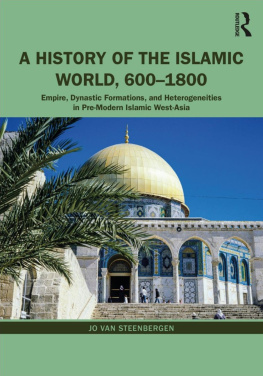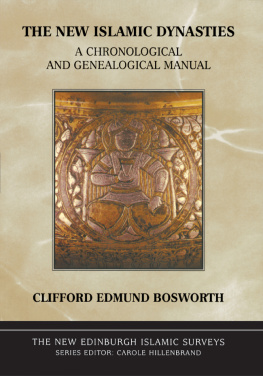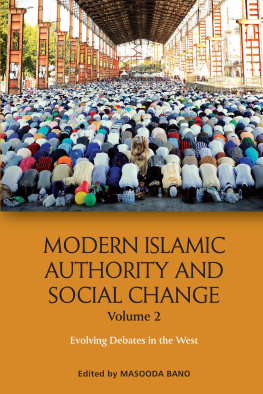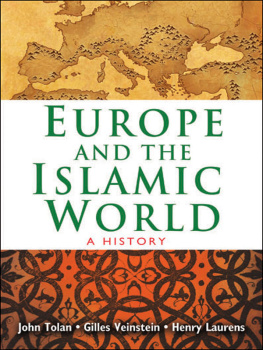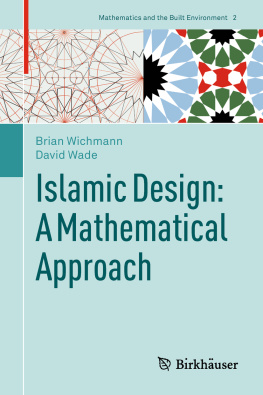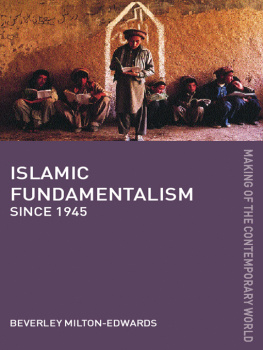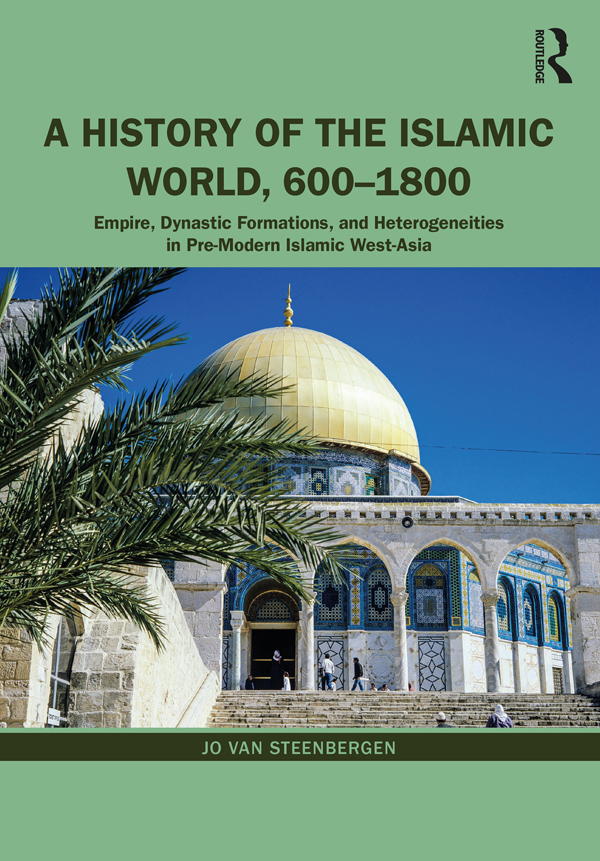
This engaging and lucid history of the Islamic world from its beginnings down to the advent of the modern age combines a clear theoretical framework with an up-to-date understanding of recent scholarship. The result is a readable history of pre-modern Islamic societies which avoids both excesses of names and dates and the conventional golden age and decline narratives in favour of more sophisticated explanations of historical change. It will be a very welcome addition to many university courses on Islam and Islamic History, and will also be genuinely useful to a wider general readership.
Andrew Marsham, University of Cambridge, UK
This clear and comprehensive summary will be a valuable addition to the literature and should find its place on all student reading lists. Indeed, all those interested in the history of Islamic civilisations will find much to enlighten them in this accessible volume.
Esther-Miriam Wagner, Woolf Institute, UK
A History of the Islamic World, 6001800
A History of the Islamic World, 6001800 supplies a fresh and unique survey of the formation of the Islamic world and the key developments that characterize this broad regions history from late antiquity up to the beginning of the modern era.
Containing two chronological parts and fourteen chapters, this impressive overview explains how different tides in Islamic history washed ashore diverse sets of leadership groups, multiple practices of power and authority, and dynamic imperial and dynastic discourses in a theocratic age. A text that transcends many of todays popular stereotypes of the Islamic past, the volume takes a holistically and theoretically informed approach for understanding, interpreting, and teaching the premodern history of Islamic West-Asia. Jo Van Steenbergen identifies the Asian connectedness of the sociocultural landscapes between the Nile in the southwest to the Bosporus in the northwest, and the Oxus (Amu Darya) and Jaxartes (Syr Darya) in the northeast to the Indus in the southeast. This abundantly illustrated book also offers maps and dynastic tables, enabling students to gain an informed understanding of this broad region of the world.
This book is an essential text for undergraduate classes on Islamic History, Medieval and Early Modern History, Middle East Studies, and Religious History.
Jo Van Steenbergen teaches Islamic history at Ghent University, Belgium. He has published extensively on medieval Islamic history, including Order Out of Chaos (2006), Caliphate and Kingship in a Fifteenth-Century Literary History (2016), and Trajectories of State Formation across Fifteenth-Century Islamic West-Asia (2020).
First published 2021
by Routledge
2 Park Square, Milton Park, Abingdon, Oxon OX14 4RN
and by Routledge
52 Vanderbilt Avenue, New York, NY 10017
Routledge is an imprint of the Taylor & Francis Group, an informa business
2021 Jo Van Steenbergen
The right of Jo Van Steenbergen to be identified as author of this work has been asserted by him in accordance with sections 77 and 78 of the Copyright, Designs and Patents Act 1988.
All rights reserved. No part of this book may be reprinted or reproduced or utilised in any form or by any electronic, mechanical, or other means, now known or hereafter invented, including photocopying and recording, or in any information storage or retrieval system, without permission in writing from the publishers.
Trademark notice : Product or corporate names may be trademarks or registered trademarks, and are used only for identification and explanation without intent to infringe.
British Library Cataloguing-in-Publication Data
A catalogue record for this book is available from the British Library
Library of Congress Cataloging-in-Publication Data
Names: Steenbergen, J. van, author.
Title: A history of the Islamic world, 6001800 : empire, dynastic formations, and
heterogeneities in pre-modern Islamic West-Asia / Jo Van Steenbergen.
Description: First edition. | New York : Routledge, 2020. | Includes bibliographical
references and index.
Identifiers: LCCN 2020009899 (print) | LCCN 2020009900 (ebook)
Subjects: LCSH: Islamic countriesHistory. | Islamic civilization. | IslamHistory. |
Middle EastHistory.
Classification: LCC DS35.63 .S737 2020 (print) | LCC DS35.63 (ebook) |
DDC 950dc23
LC record available at https://lccn.loc.gov/2020009899
LC ebook record available at https://lccn.loc.gov/2020009900
ISBN: 978-0-415-66031-0 (hbk)
ISBN: 978-0-415-66032-7 (pbk)
ISBN: 978-1-003-05659-1 (ebk)
Typeset in Times New Roman
by Apex CoVantage, LLC
Maps
1 West-Asia in Late Antiquity
2 Arabian Expansions and Late Antique Transformations (7th8th centuries)
3 Abbasid Imperial Formation (9th century)
4 Abbasid Imperial Transformations (9th10th centuries)
5 Post-Abbasid Fragmentation in Islamic West-Asia (10th11th centuries)
6 Medieval Transformations in Islamic West-Asia (11th12th centuries)
7 Medieval Transformations in Islamic West-Asia (mid-12thmid-13th centuries)
8 Medieval Transformations in Islamic West-Asia (mid-13th14th centuries)
9 Medieval Ottoman Transformations in Islamic West-Asia (14th16th centuries)
10 Medieval Transformations in Islamic West-Asia (early 15th century)
11 Medieval and Early Modern Transformations in Islamic West-Asia (16th17th centuries)
12 West-Asia in Early Modernity (18th century)
Dynastic tables
1 Simplified table of the Meccan leadership of Quraysh, including marital relationships in Muhammads family and the Umayyads
2 Simplified table of Muhammads clan of Hashim, with specific focus on the descendants of Muhammads nephew and son-in-law Ali ibn Abi Talib, the Alids, and of Muhammads uncle al-Abbas, the Abbasids, and on the respective lineages of Shiite imam s and Abbasid caliphs among them in particular
3 Simplified dynastic table of the descendants of the Turkish leader Seljuk, the Seljuks
4 Simplified dynastic table of the descendants of the Seljuk atabeg Zengi, the Zengids
5 Simplified dynastic table of the descendants and relatives of Saladin, the Ayyubids (with reference to the region/s under their authority)
6A The Cairo Sultanate. liiyya and Qalwnids
6B The Cairo Sultanate. Barqqids and Turko-Circassians
7 Simplified dynastic table of the descendants of Chinggis Khan, especially the Chinggisid Great Khans and the Hlegid Il-Khans
8 Simplified table of Ottoman dynastic leadership
9 Simplified dynastic table of the descendants of Timur (Temr), the Timurids (with reference to the centers of their authority in the regions of Transoxania [Samarqand] and Khurasan [Herat])
10 Simplified table of Qara Qoyunlu Turkmen dynastic leadership (with reference to the urban centers of their authority)
11 Simplified table of Aq Qoyunlu Turkmen dynastic leadership (with reference to the urban centers of their authority), including identification of Safavi connections
12 Simplified table of Safavid dynastic leadership
Illustrations
0.1 Al-Idrisis world map
1.1 Istanbul/Constantinople: the former Roman basilica Hagia Sophia and the Ottoman mosque Ayasofya
1.2 Epitaph of Mara (Imru) al-Qays
1.3 Mecca and its surroundings in the early 20th century
2.1 and 2.2 Quran fragment in Hijazi script, manuscript on parchment, carbon-dated c . 24 AH/645 (but dated c . 700 on the basis of style and decoration), conforming to todays standard text of the Quran (parts of chapters [surahs] 18 to 20)
2.3 Medina: mosque with grave of the Prophet (steel engraving, 19th century)
Next page
